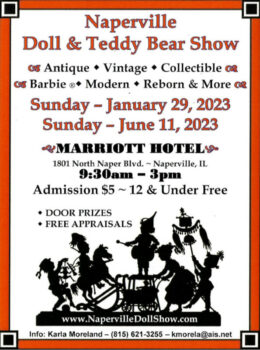For more than a century, teddy bears have been a popular childhood toy, and even a lifelong keepsake. While many people know that the bears got their name from President Theodore “Teddy” Roosevelt, not as many know the unique history of one German woman and how her family’s designs would go on to impact lives worldwide.
Margarete Steiff, the woman who lends her name to the Steiff bears, was born in Giengen an der Brenz, Germany, in 1847. According to Steiff’s own history, following a childhood disease at 18 months, which was later diagnosed as polio, Margarete lost the use of her legs and had only painful use of her right arm, leaving her wheelchair bound with limited mobility. Over the years, however, Steiff pushed through the pain, graduating from sewing school at 17 and working in her two elder sisters’ tailor shop and later her own small shop at her family’s home in 1874.
Starting in 1877, she took the advice of her cousin-in-law, and more fully set about achieving her own independence. She started a felt clothing shop, which began to increase in popularity, eventually requiring her to hire a few additional seamstresses to keep up with demand. At the end of the decade, she came across the design of a stuffed elephant in the magazine Modenwelt, and started making them in her shop, first as pin cushions but soon growing into a toy line.
Steiff Manufacture was officially founded in 1880, with the stuffed elephants flying off the shelves at the local market. With business booming, Steiff’s brother, Fritz, built her a house that was accessible for her and included a small shop space for her to work. Her line of stuffed animals continued to grow, and by the time the first Steiff catalog was released in 1892, it included almost a dozen stuffed animals, including monkeys, camels, dogs, cats and giraffes. The following year, Steiff Manufacture participated in the Leipzig toy trade fair, while demand for the animals had grown the business to employ 14 seamstresses and at-home employees.
But Steiff’s crowning achievement was the teddy bear, which first went into production in 1902. The concept of Steiff’s nephew, Richard, the bear was designed to have moving arms and legs – a world first. Using mohair plush as a covering, Richard made several of the bears and attended the Leipzig toy trade fair, where an American trader discovered the novel toys and placed an order for 3,000. Within four years, the bears flew off American shelves and had adopted their new name: the teddy bear.
The Steiff bears have continued to evolve and adapt over the decades, taking on new features and personas and only growing in demand. Today, the bears are still made in Steiff’s hometown Giengen an der Brenz, which is also now home to the Steiff Museum, featuring the full history and evolution of the bears and other stuffed creations through the years. While generations may separate the original designs from kids today, the Steiff family’s creation continues to resonate with children, still a cherished childhood friend for millions more than 100 years later.


